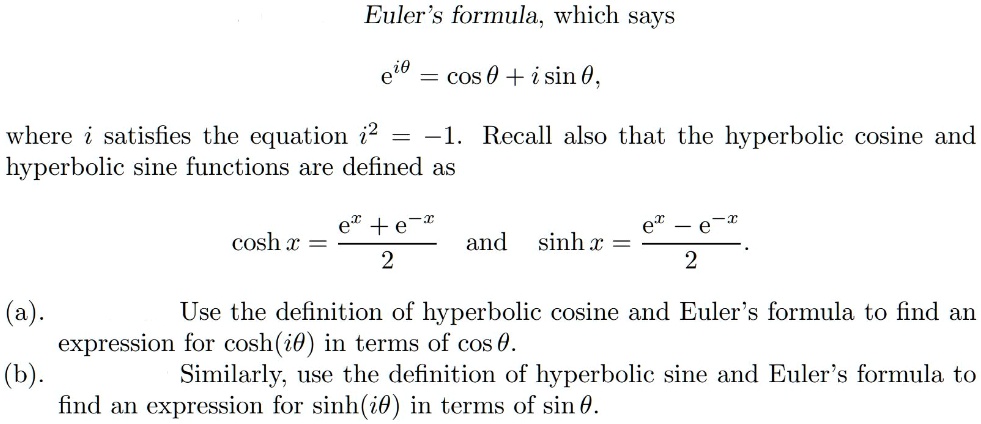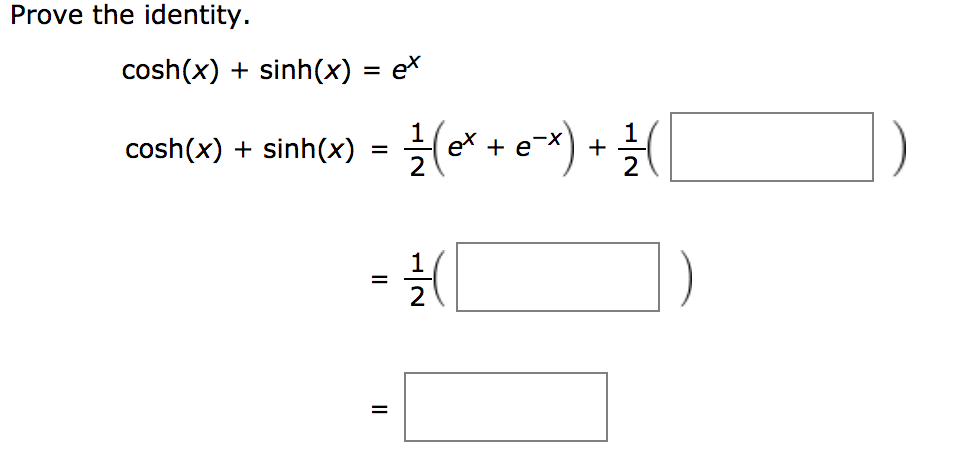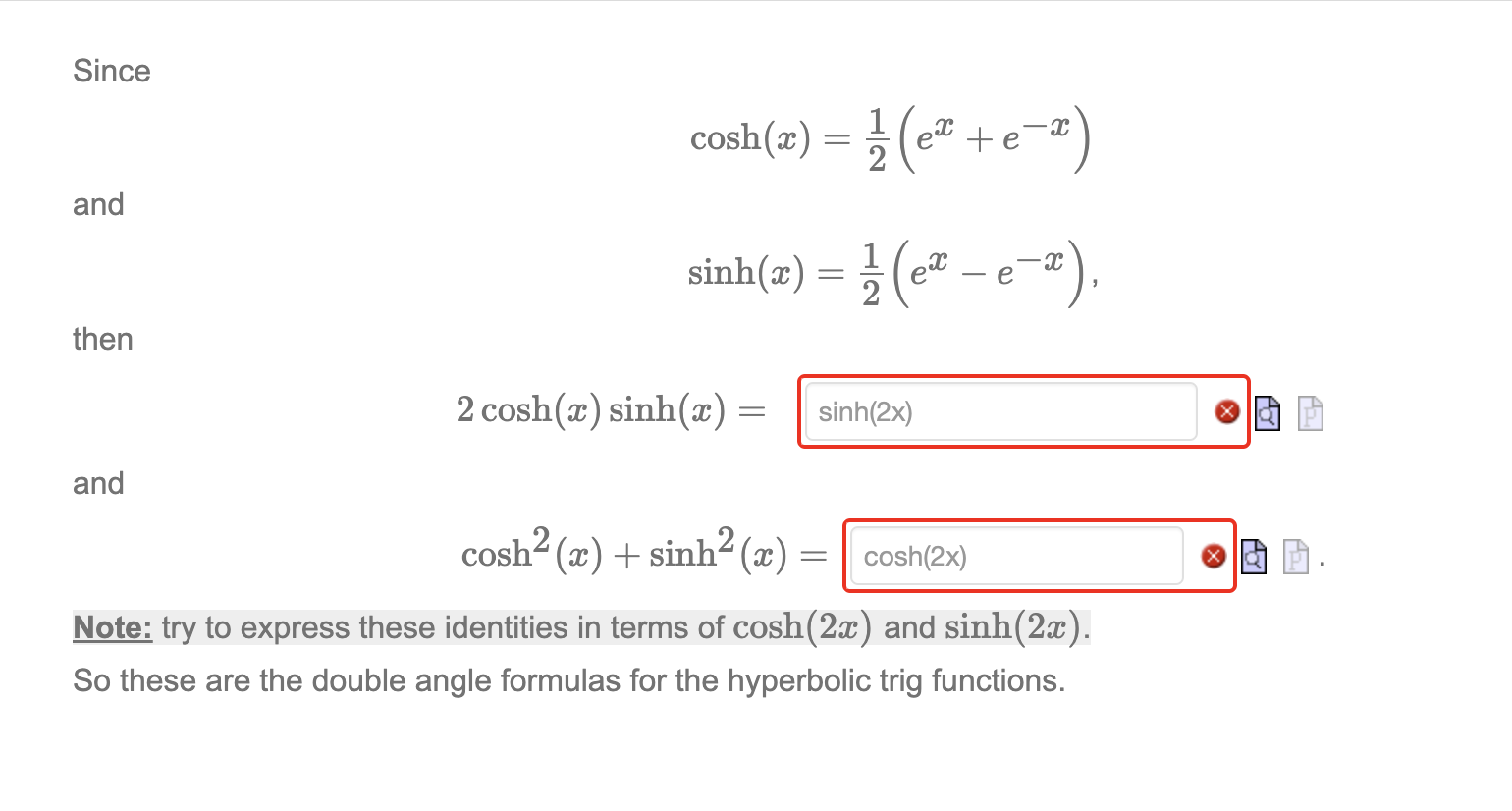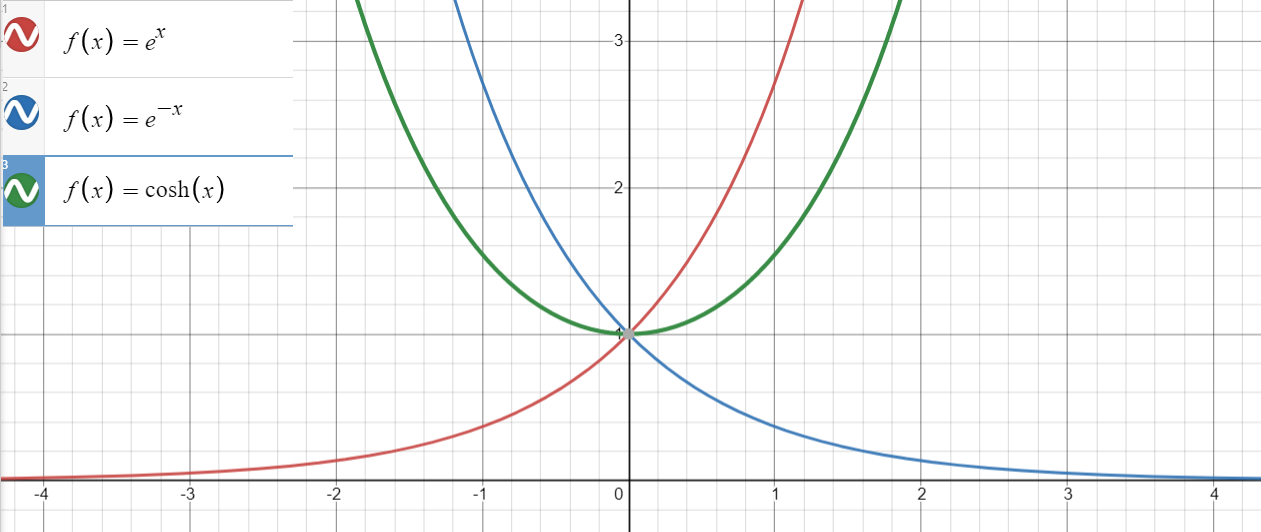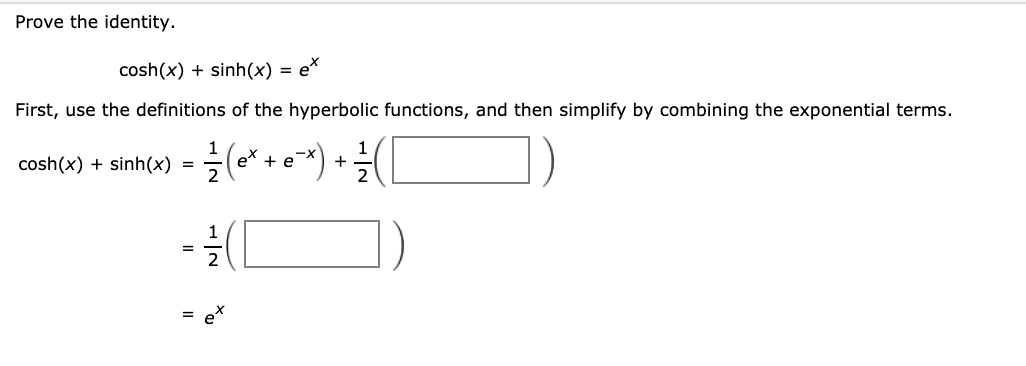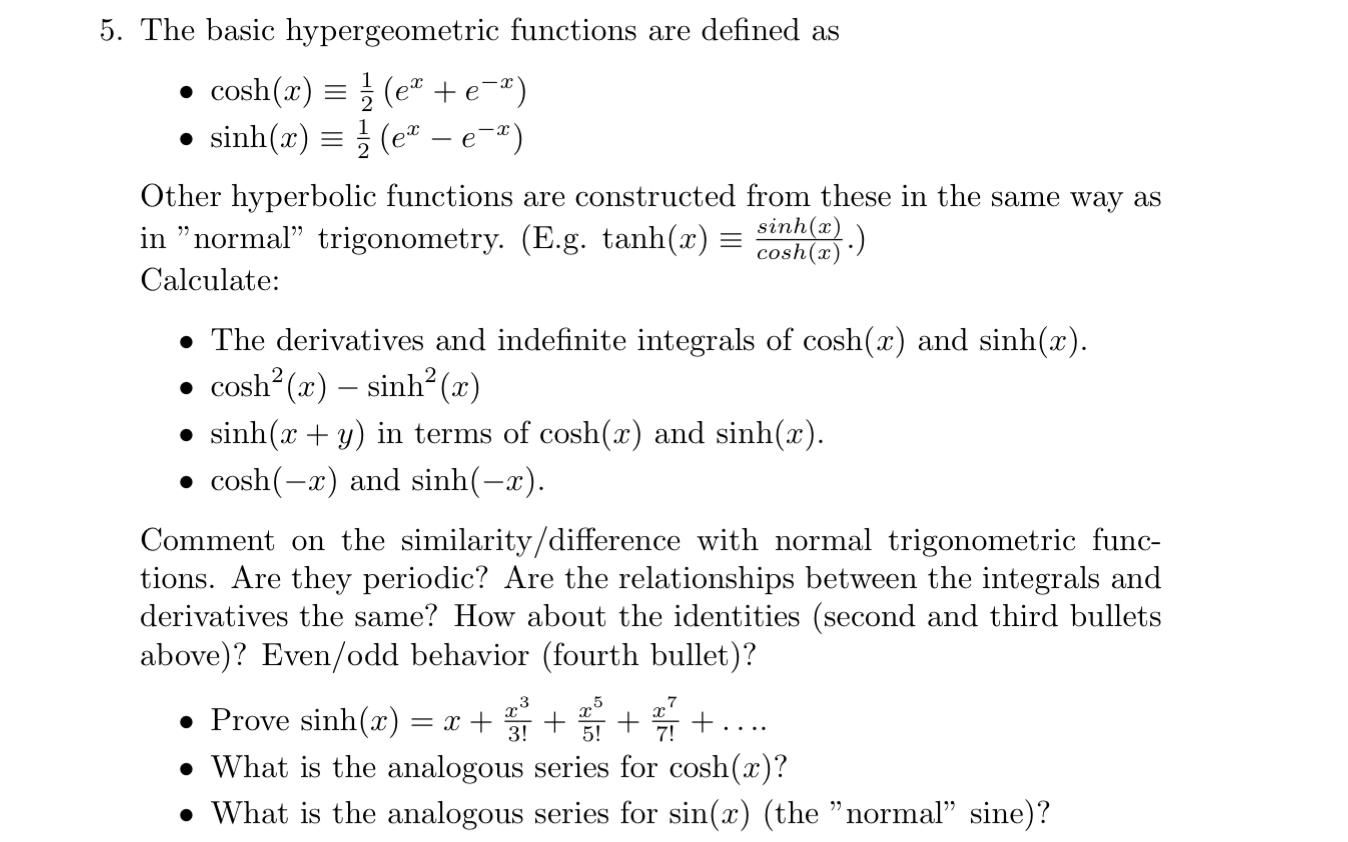
The hyperbolic sine of u is defined as \sinh u = \frac{1}{2} ( e ^u - e ^{-u}). The hyperbolic cosine of u is defined as \cosh u = \frac{1}{2} ( e ^

Cosh(x) function is the average of e x and e − x Hyperbolic functions... | Download Scientific Diagram

integration - Integral of $e^{-k \cosh(z)} \text {sech}(z) \ dz$ from $z=0$ to $z=\infty$ - Mathematics Stack Exchange

SOLVED: The hyperbolic trigonometric functions csh and sinh 3 are defined as follows cosh 8 (e +e-8), sinh 8 5(68 e-8) The definitions of the other hyperbolic trigonometric functions are defined in
